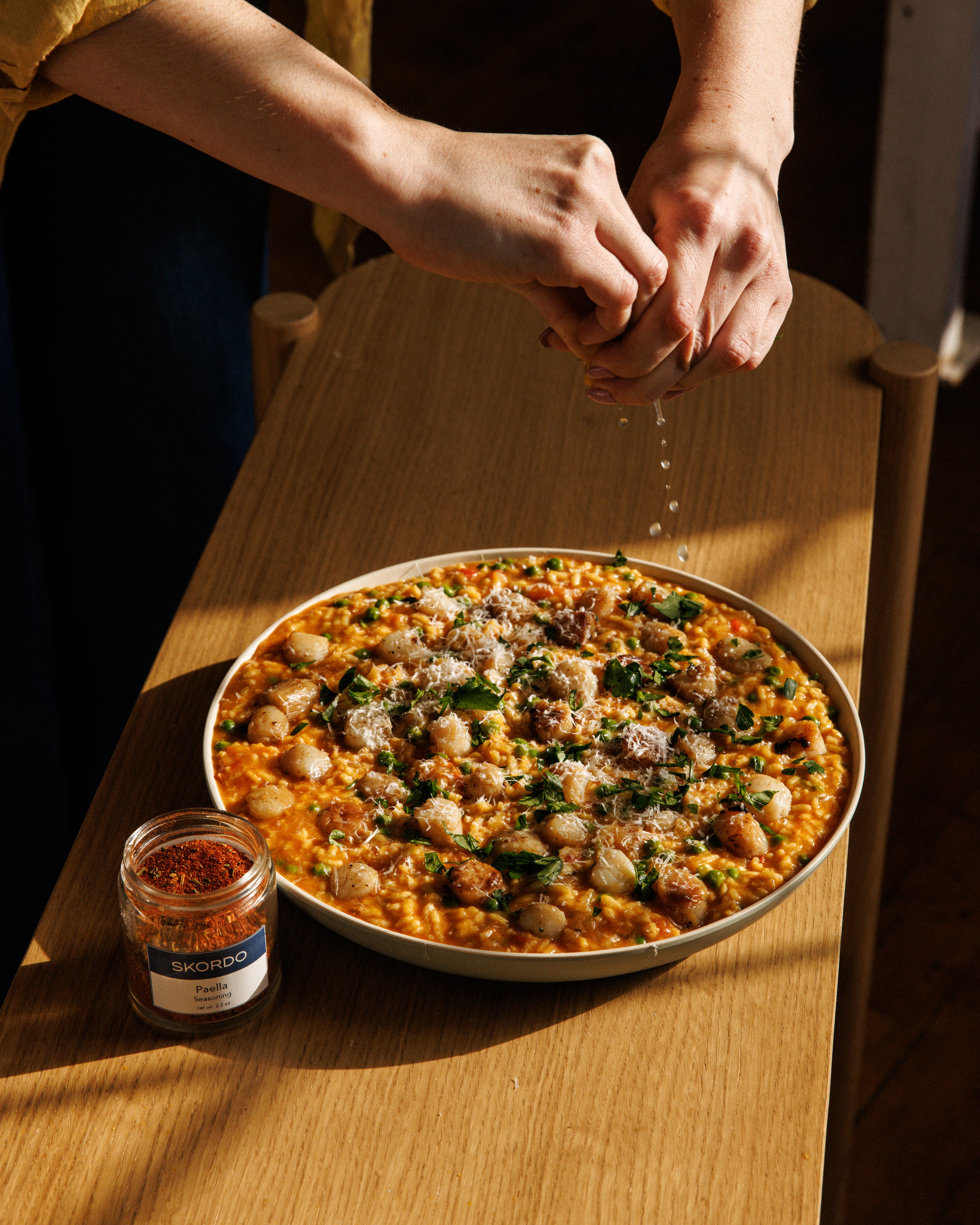Among our herb + spice selection, about 20% of them are whole seeds. It can be tricky to know which to use, when to toast, and what flavors they bring to the table. Links to all of our seeds toward the bottom, but first let’s deep dive into some common confusions.
Brown Mustard Seeds + Yellow Mustard Seeds
Mustard seeds don’t carry much smell at all, until they are toasted or soaked. Once their natural oils are activated, the aroma is earthy and quite pungent. Yellow mustard seeds are mild and most used here in the US, primarily in pickles, brines, and dressings. In Asia, you’ll find brown or black mustard seeds in spice blends and condiments. In Indian cooking, mustard seeds are often fried and used in many curries and vegetable-based dishes.
Fennel Seeds + Fenugreek Seeds
While they have similar titles, the flavor profile of these two ingredients are quite different. Fennel Seeds carry a mellow licorice flavor and are primarily used in Mediterranean cooking. With the Fennel plant, a member of the parsley family, you use the pollen, leaves, flowers, stems and seeds. Fenugreek Seeds have a sweet + nutty aroma, with an almost Maple taste and are found in Indian dishes most often. When harvesting Fenugreek, a member of the pea family, you only use the leaves and seeds.
Black Sesame Seeds + White Sesame Seeds
Used more often for texture and visual contrast than flavor, sesame seeds come in thousands of varieties. Middle Eastern, Asian, Indian, and African cuisines consider them a staple ingredient due to their high protein and oil levels. White Sesames are simply black sesames with their shells removed (also known as hulled seeds). Either variation of the seed could be found both sweet and savory across different cultures. Some familiar ways you may have enjoyed sesame seeds are: Tahini, Halva, Zaatar, Gomashio, Togarashi, Dukkah, and Everything Seasoning.
Poppy Seeds + Nigella Seeds
Nigella Seeds get mixed up with various nicknames; “Black Cumin”, “Black Carraway”, “Fennel Flower”, “Onion Seeds”, etc. The Nigella plant is a member of the Ranunculaceae Family, like buttercup flowers. These seeds have an herbaceous flavor like oregano, but a texture between sesame seeds + poppy seeds. Their crunchy texture makes them a great addition to mixed seed blends such as our Everything Seasoning.
Poppy seeds are rarely cooked with and most often used on top of baked goods such as crackers, bagels, or breads. Their coloring can vary depending on where in the world they are grown, but they always produce the same uniform shape and popping texture. You may have heard rumors that poppy seed bagels alter drug test results, this is because the unripe seed pods of the poppy plant have a latex that is the source of opium. Have no fear, it does not carry over to the parts we consume!
Poppy seeds are a part of our Lost Kitchen 4-set, as Erin French has a recipe for her poppy seed buns on page 123 of the Lost Kitchen.
Other seeds you can find on SKORDO.com and in our shops are : Achiote Seeds, Anise Seeds, Celery Seeds, Caraway Seeds, Coriander Seeds, Cardamom Seeds, Cumin Seeds.
Dukkah
 An Egyptian spice mix of seeds and warm spices. Our SKORDO Dukkah has a delightful toasted hazelnut base, with white sesame seeds, coriander, cumin, and salt. You may find a different combination of varying components each time you taste a new Dukkah, sometimes including fennel seeds, cayenne, and pecans to name a few. In our Recipe Box we have a delicious Dukkah-Crusted Halloumi that we enjoyed drizzled with Honey.
An Egyptian spice mix of seeds and warm spices. Our SKORDO Dukkah has a delightful toasted hazelnut base, with white sesame seeds, coriander, cumin, and salt. You may find a different combination of varying components each time you taste a new Dukkah, sometimes including fennel seeds, cayenne, and pecans to name a few. In our Recipe Box we have a delicious Dukkah-Crusted Halloumi that we enjoyed drizzled with Honey.
Israeli Za'atar
Most often used a condiment, to be sprinkled or stirred atop a variety of dishes. Ours has thyme, white sesame seeds, sumac, and salt. It’s a coarse blend that we’ve enjoyed on a roasted butternut squash dish, and on our Challah.
Pickling Spice blend
Togarashi
Essentially a Japanese seven spice blend, also used as a condiment. White Sesame Seed, Orange Zest, Black Pepper, Garlic, Red Pepper Flakes, Nori make up this bright and crunchy combination with just a little heat from the red pepper flakes. This one is a team member favorite, try it on rice or noodle dishes, shishito peppers, or even pickles!
Gomashio
“The Works”
Everything Seasoning
An increasingly popular blend, used as an everyday crunchy topping on almost anything! Ours is loaded with garlic, onion, large flakes of Cyprus flaked salt, nutty sesame seeds, nigella seeds and dried bell pepper. We love it on this sandwich bread and even made egg salad with it!






















